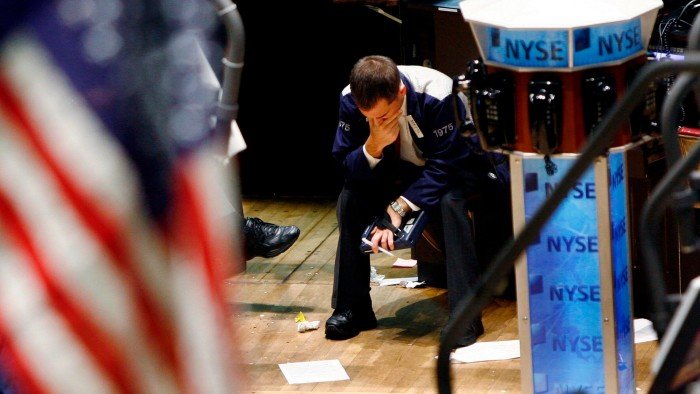Unlock the Editor’s Digest for free
Roula Khalaf, Editor of the FT, selects her favourite stories in this weekly newsletter.
The writer is a former banker and author of ‘Traders, Guns & Money’, ‘Extreme Money’ and ‘Banquet of Consequences’
In the lead up to the global financial crisis, the systemic risks building in markets were overlooked by many. Those risks proved calamitous. Today, there are multiple financial vulnerabilities and faultlines.
First, investors have increasingly borrowed low-cost funds, often in foreign currencies, to invest in higher yielding investments in ubiquitous carry trades, that are now vulnerable to moves in asset prices and currency values.
Second, investors have wagered on stability by investing in options, either directly or via funds, which hedge a counterparty from volatility. While they pay a premium, they risk large losses when there is more volatility. Likewise, so-called risk parity funds must maintain a set risk level, necessitating liquidating riskier assets when volatility increases.
Third, relative value trades that bet on the relationships between assets have become very large, raising risks if they sour. The basis trade, where investors buy US Treasuries and hedge them with futures to lock in small gains, assumes high correlation between the two and price convergence. Investors also hold large positions on the increasingly unstable spread between interest rate swaps and government bond rates.
Fourth, exposure to illiquidity has increased with the migration to unlisted private equity and credit. The claimed higher returns are in exchange for unquantified liquidity risk.
Fifth, the repackaging of risky or illiquid assets via securitisations and synthetic risk transfer, a form of credit insurance resembling collateralised debt obligations, has grown again in recent years. These slice assets into tranches of varying risk through complex modelling . . . The adequacy of less-secured tranches of those assets to absorb first losses on the underlying loans and protect higher-rated securities created remains unverified.
These structures introduce vulnerabilities that will be ruthlessly unpicked in a crisis. The monetary volumes of these trades are substantial, well in excess of the around $1.3tn pile of US subprime loans that built up before the 2008 financial crisis.
The weakness overall is leverage, both in explicit borrowings but also financial engineering. Falling cash flows from a slowing global economy will test debt levels. US business defaults are at a post-financial crisis high with rates for highly leveraged private equity loans and junk bonds reaching the highest levels since the pandemic in 2020. The IMF has warned of pressures in commercial property and non-bank financial intermediaries. Delinquency rates on mortgage, car, credit card and other consumer debt are increasing.
The unwind in current market excesses will follow a familiar trajectory. Falling values and increasing price volatility will trigger calls for more collateral, or margin, on trades, a scramble for cash and forced deleveraging. There is also uncertainty around valuations of private investments compared with listed securities.
Illiquidity will complicate matters as investors facing losses will reduce exposures while others will be required to bolster liquidity to meet margin calls or cut positions. As you typically sell what is liquid and what has the lowest losses, shocks will spread, increasing volatility and disturbing traditional asset price correlations.
Price falls may be exaggerated because of the reduction in the firms that act as market makers due to industry consolidation and high capital charges on dealer inventory. In addition, trading is now dominated by funds that are actually users, not providers, of liquidity.
The final vulnerability is belief in government underwriting of risk and bailouts. But major central banks are constrained by their balance sheets, which at around $20tn (below the peak of over $25tn) are well above their $5tn level in 2007. Interest rates are at modest levels, limiting the scope for large cuts, especially with continuing inflation concerns. Deficits under more pressure from military needs, interest costs and debt levels mean the cavalry may lack horses to ride to the rescue.
Markets follow Lenin’s dictum “you probe with bayonets: if you find mush, you push; if you find steel, you withdraw”. As a crisis evolves, markets test out weaknesses, probing until finding price levels with solid support. Investors will discover again that there are no new financial eras and excesses are never permanent.

